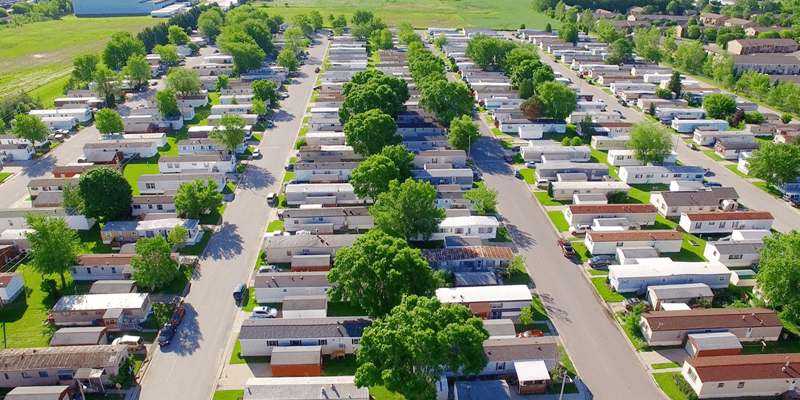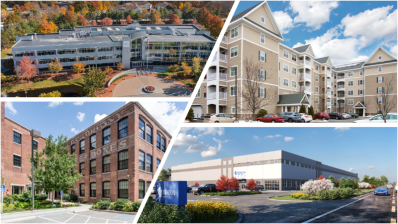
Manufacturing housing is a property niche that has historically hovered on the fringe of the mainstream commercial real estate investment market. However, this property type has significant market share in the U.S. since, according to US Census data as of 2013, an estimated 20 million people lived in manufactured housing communities (more commonly referred to as “mobile home parks”).
Over the past decade, the manufactured housing sector has attracted increased investor interest that is now transforming what has historically been a mom-and-pop dominated investment market. REITs and other large institutional investors, including the likes of Sam Zell’s Equity Lifestyle Properties REIT (NYSE: ELS), Berkshire Hathaway and Brookfield Properties, have moved into the space, bringing increased transparency, consolidation, professional management and greater operating efficiencies to the sector.
The public reporting requirements of these institutions have also illuminated the financial benefits of investing in an asset class that is known for strong cash flow and steady, recession-proof growth. For the most part, homeowners own their own units and pay a rental fee to occupy space in a manufactured housing community. Park owners are responsible for maintaining infrastructure, such as sidewalks, utility hook-ups and common area facilities. Generally, park owners are not responsible for maintaining privately owned individual units. This can create a lower cost structure with far greater certainty of costs, which translates into both greater and more predictable gross revenues that drop directly to the bottom line, ultimately delivering good cash flow.
Although some data sources estimate the size of the U.S. market at about 50,000 mobile home parks, the Manufactured Housing Institute puts the volume of “land lease” communities specifically at a lower level of 37,624 communities containing 4.2 million homes. Industry research also shows steady annual rent increases on those land leases at 3%. One reason behind this rent growth is strong demand for manufactured housing along with significant barriers to entry that keep new supply (from new manufactured housing communities) in check. Some of the hurdles standing in the way of new development include rising land costs, difficulty in obtaining the necessary zoning and city approvals and old-fashioned “NIMBYism” from neighbors who fear that “trailer parks” will bring down property values and increase crime and other social problems.
Asset Class Overview
Manufactured housing runs the gamut from low-cost, no-frills trailer and mobile home parks to resort-style manufacturing housing communities that come with a variety of amenities such as community clubhouses, fitness centers and swimming pools. Although other property types, such as office, retail, and apartments, differentiate quality by classifying assets as A, B or C rankings, many manufacturing housing communities use a star rating system, similar to hotels and restaurants, with 5 being the highest and 1 being the lowest.
Manufactured housing and mobile homes are terms that are often used interchangeably, but they are distinctly different types of housing. The federal government issued a new Department of Housing and Urban Development (HUD) construction standard for the construction of factory-built homes after June 15, 1976. Generally, the mobile homes that still existed prior to this date are “legacy” homes since they were built prior to the new standards going into effect. One of the key differences is that mobile homes are not attached to the land, whereas manufactured homes are installed on an approved foundation or support system.
Different Categories of Manufactured Housing Communities:
- Mobile home communities are classified as family parks with no age restrictions. These communities come in all sizes and price points.
- 55+ parks are age restricted communities for seniors. Mobile home senior living communities also come in all sizes and price points, and are prevalent in popular senior retirement areas throughout the southern U.S., such as Arizona, Texas and Florida.
- Some manufactured home communities offer different options, including mobile and manufacturing homes, as well as rental sites that are available for recreational vehicle (RV) or camper parking. The blended parks are more common for seasonal residents.
Ownership Structure:
- Most parks own the land and charge a monthly fee for renting the home site similar to a ground lease.
- Homeowners may own both the land and unit and pay park or homeownership association fees for services, maintenance and use of community facilities.
- Some parks rent both the unit and the underlying ground site for a certain percentage of units that can range from a minority of units all the way up to an entire park.
Demand Drivers
Affordable & Workforce Housing: One of the largest demand drivers for manufactured housing is that it offers a lower cost housing solution amid soaring costs for both homeownership and rental housing. Some view manufactured housing as a viable, non-subsidized solution. According to a 2015 study conducted by the Lincoln Institute of Land Policy, manufactured housing accounted for two-thirds of new affordable-single family housing. Today’s models are often robust, efficient, and inviting, with the potential to help alleviate the nation’s shortage of safe, affordable housing. As housing affordability in the U.S. becomes an ever greater issue, it is nearly inevitable that demand for manufacturing housing will only increase over time.
Aging Baby Boomers: A second important group driving demand for manufactured housing is seniors who are moving to 55+ retirement communities, either on a full-time or part-time seasonal basis for “snowbirds” that are seeking a warmer second winter home. Those seniors now include both the Silent Generation (1928-1945) and Baby Boomers (1946-1964). However, it is that larger Baby Boomer cohort that will have a significant impact on demand now and for years to come. According to the U.S. Census Bureau, there are nearly 75 million baby boomers in the U.S. between the ages of 53 and 71. That demographic is still in the early days of driving demand for age-restricted communities that offer everything from group activities and social programs to amenities such as fitness centers, tennis and swimming pools.
Is This a Good Investment Option for You?
Like any property type, investors need to look at the macro and micro level factors driving demand for manufactured housing. Manufactured home communities can be a difficult market to enter for individual investors. Despite the ongoing consolidation in the industry over the past several years, it remains a highly fragmented industry. IBISWorld estimates that in 2017, the top four operators in the Land Leasing industry will account for less than 20.0% of total industry revenue.
In addition to steady cash flow, investors also need to consider the potential upside to be gained at the exit or sale of a manufactured housing community. One strategy for manufactured housing investors is to acquire land that may be in the path of development. The underlying land may have more value in the future for another use, such as a single-family housing development or a retail development or some other type of real estate that has a higher use and higher value. Buying well-located land in itself is a good strategy, but traditional “land banking” plays come with carrying costs where owners incur property taxes and basic land maintenance costs but earn no income. In contrast, a manufactured housing community is a way to acquire what is, at its essence, cash-flowing land. Such a strategy creates a sustainable path to holding well-located property for as many years as necessary to capture the upside potential of a future exit that could reposition the asset for a higher and better use.


